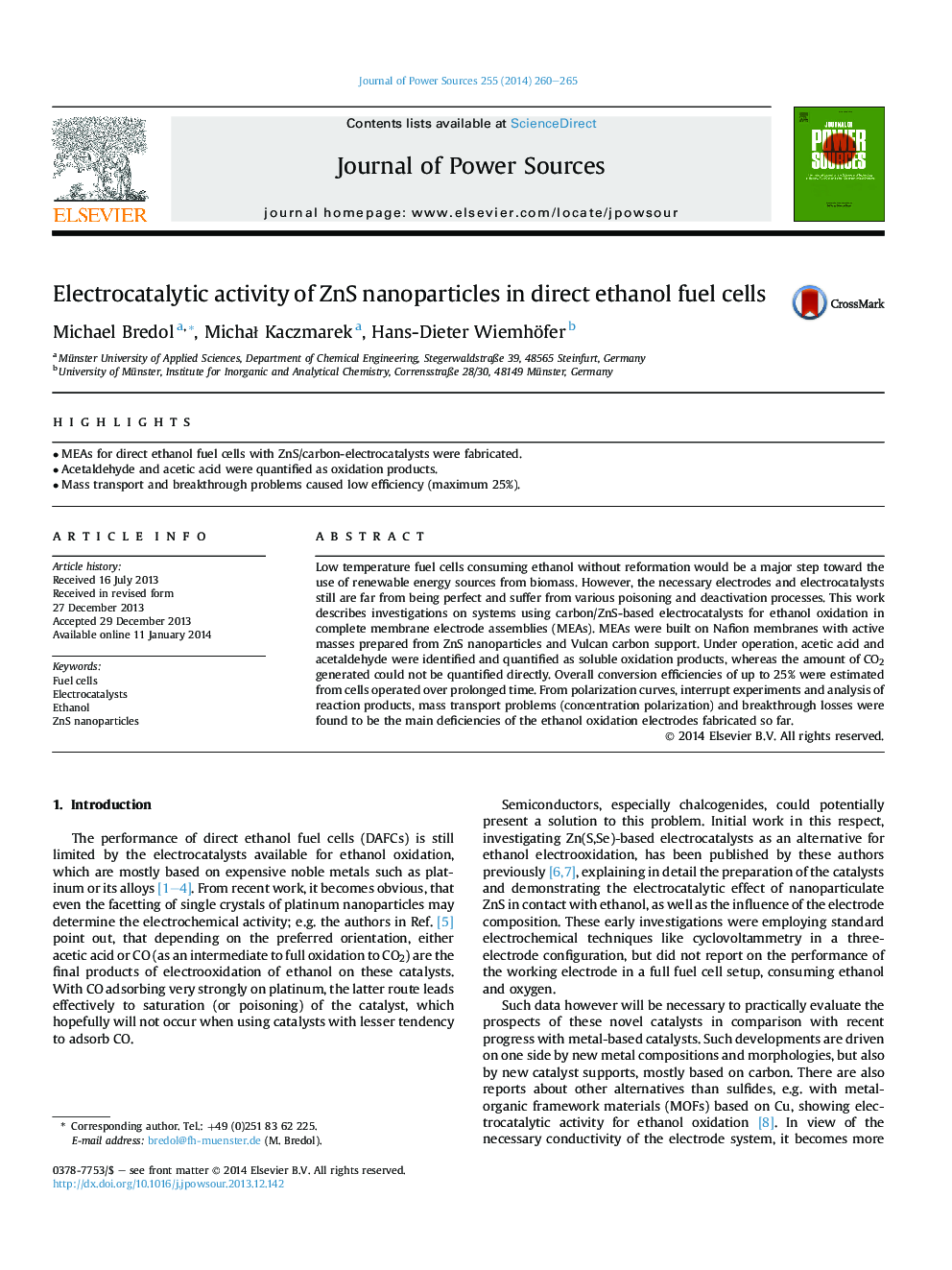| Article ID | Journal | Published Year | Pages | File Type |
|---|---|---|---|---|
| 1284190 | Journal of Power Sources | 2014 | 6 Pages |
•MEAs for direct ethanol fuel cells with ZnS/carbon-electrocatalysts were fabricated.•Acetaldehyde and acetic acid were quantified as oxidation products.•Mass transport and breakthrough problems caused low efficiency (maximum 25%).
Low temperature fuel cells consuming ethanol without reformation would be a major step toward the use of renewable energy sources from biomass. However, the necessary electrodes and electrocatalysts still are far from being perfect and suffer from various poisoning and deactivation processes. This work describes investigations on systems using carbon/ZnS-based electrocatalysts for ethanol oxidation in complete membrane electrode assemblies (MEAs). MEAs were built on Nafion membranes with active masses prepared from ZnS nanoparticles and Vulcan carbon support. Under operation, acetic acid and acetaldehyde were identified and quantified as soluble oxidation products, whereas the amount of CO2 generated could not be quantified directly. Overall conversion efficiencies of up to 25% were estimated from cells operated over prolonged time. From polarization curves, interrupt experiments and analysis of reaction products, mass transport problems (concentration polarization) and breakthrough losses were found to be the main deficiencies of the ethanol oxidation electrodes fabricated so far.
